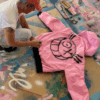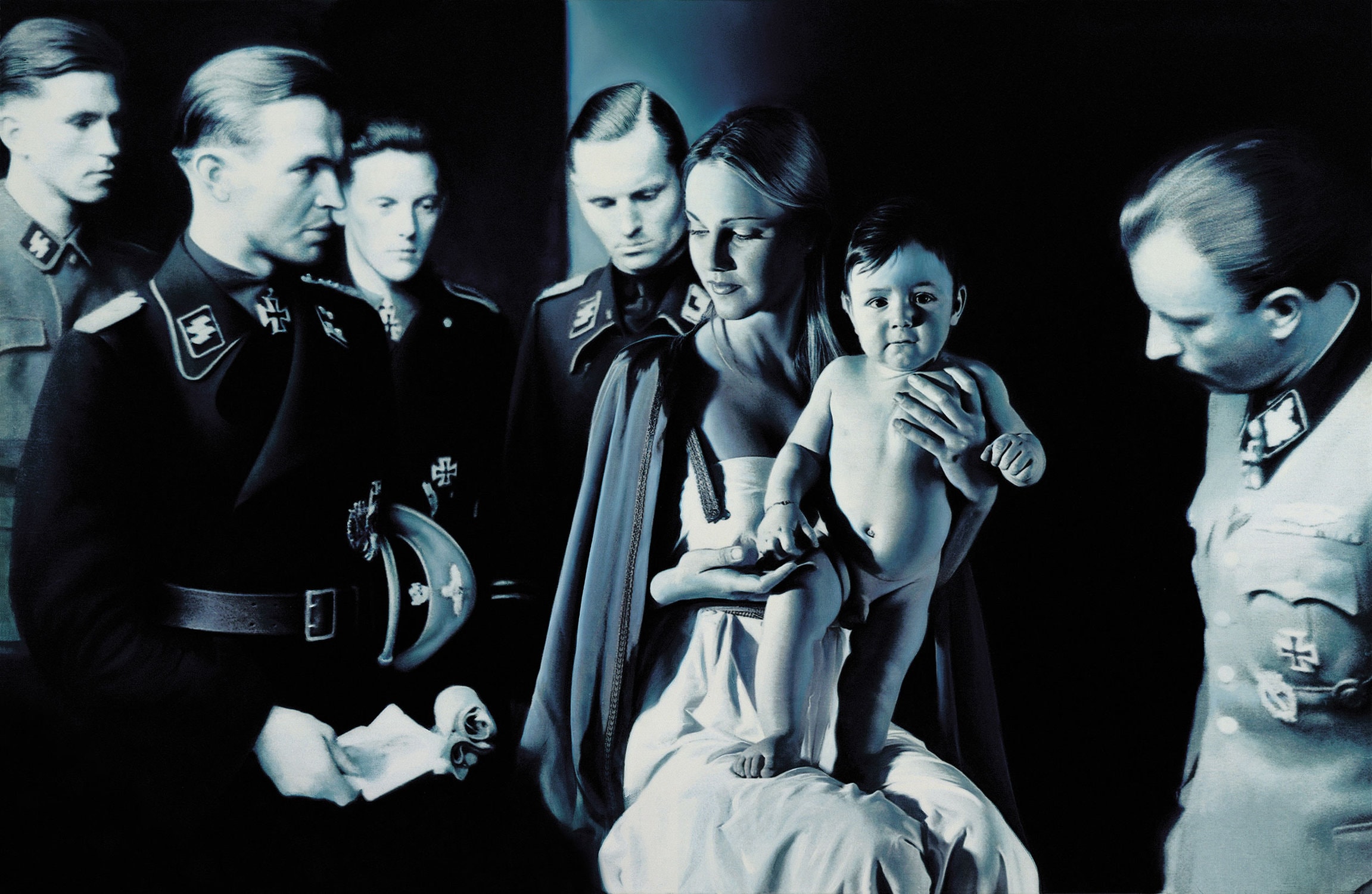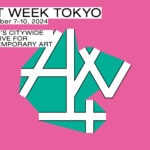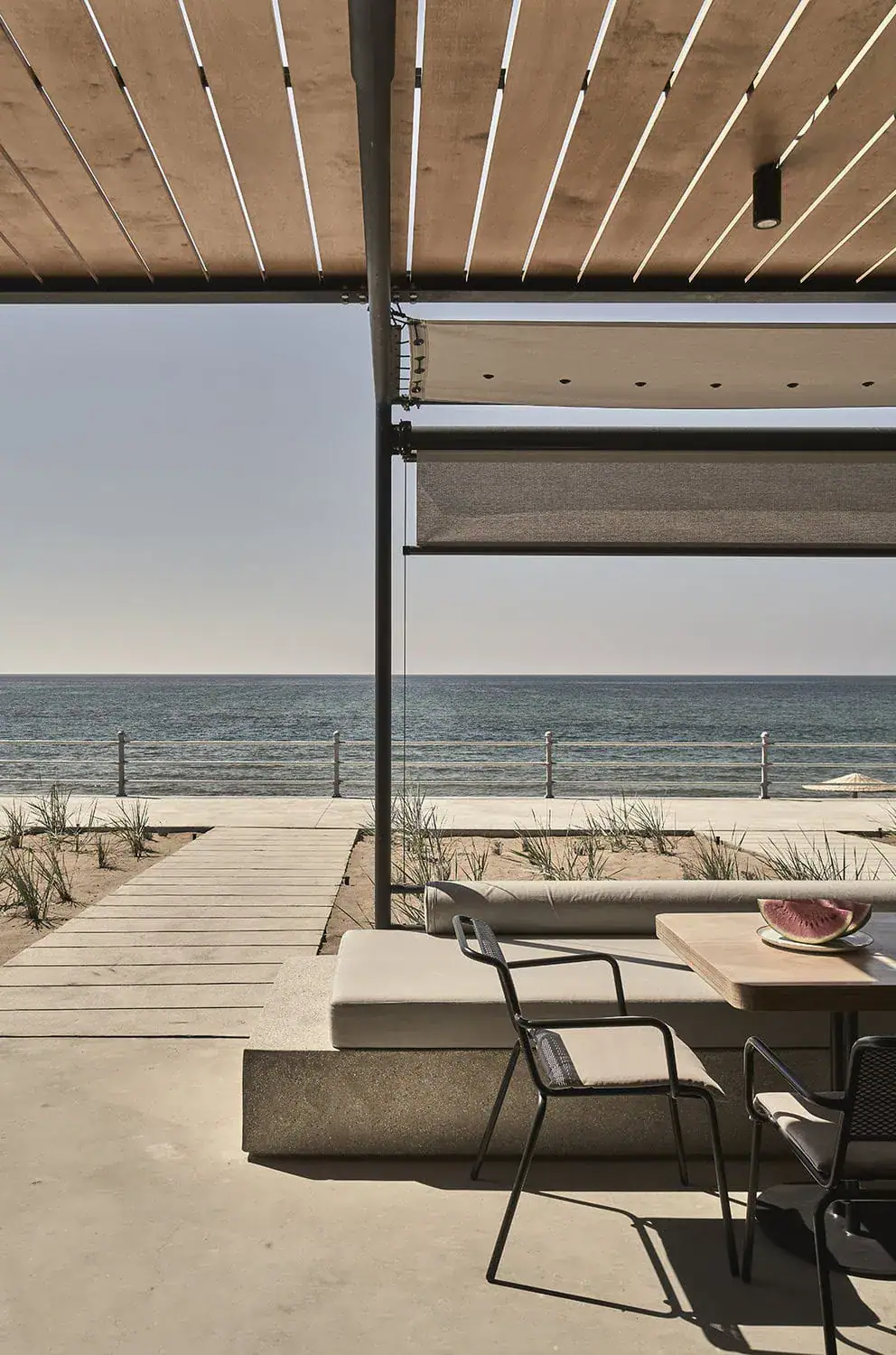On the occasion of Gottfried Helnwein’s 75th birthday, the ALBERTINA presents a comprehensive exhibition of his works from the last three decades. In each of his paintings, Helnwein, the artist born in Vienna in 1948, raises an indictment against cruelty and ruthlessness as well as the horrors of fascism.
His work is characterized by uncompromising realism that denounces social ills and focuses on the innocent, defenseless child. This child embodies psychological and social fears as well as the pain inflicted by abuse, power and violence.
Bigger than life
Helnwein’s hyperrealistic images, always based on photographic models, are “bigger than life” and impress with their technical perfection. Although the works are perceived as real, the oversized size of the works and the use of a monochrome color scheme do not correspond to reality; Helnwein dislocates the original impression of reality they are meant to convey and creates a symbolic representation. The artist combines motifs from diametrically opposed worlds in his pictorial cosmos: Manga characters and war photography, Donald Duck and Adolf Hitler, the Virgin Mary and Nazi henchmen. These combinations create a mixture of the grotesque and horror, triggering disquiet as well as trepidation. Helnwein forces us to understand the causal dependencies of the motives and relentlessly brings to our attention facts such as the mistreatment and exploitation of children, perpetration and victimhood, the cynicism of modern warfare, and the banality of evil and villainy in all its manifestations.
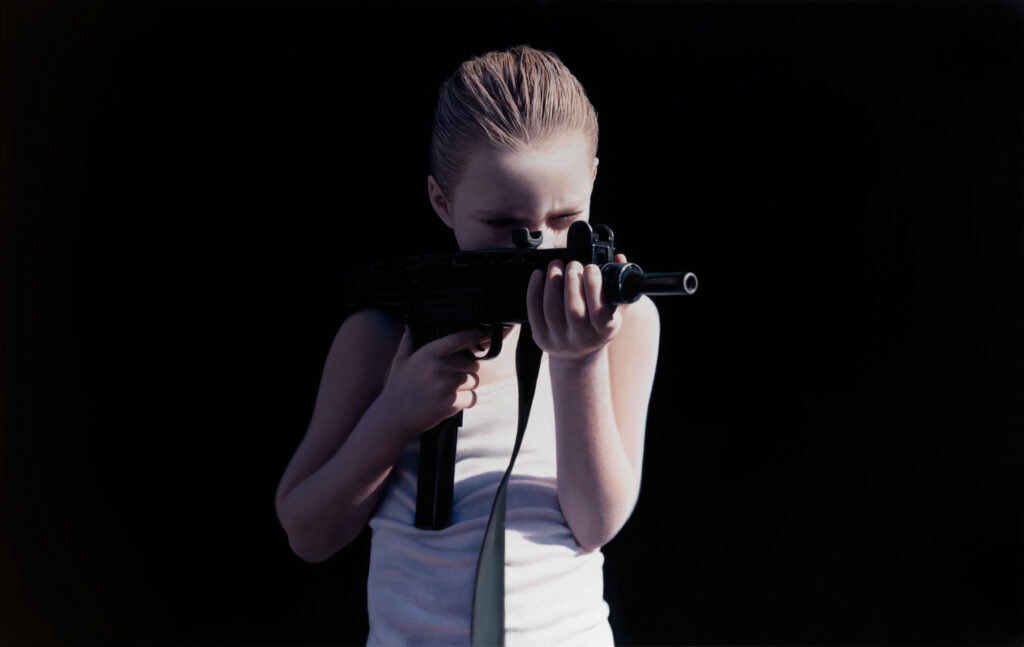
The disasters of war
In the series of works “The Disasters of War,” which Gottfried Helnwein has been working on since 2007, he integrates manga-like girl characters into disaster scenarios. Through this bizarre fusion of manga elements with real disasters, the artist highlights the absurdity of these events. Although the manga style is omnipresent in today’s popular culture, Helnwein initially found it alien and disturbing. For him, this style symbolizes an artificial childishness that does not seem human, but cold and synthetic.
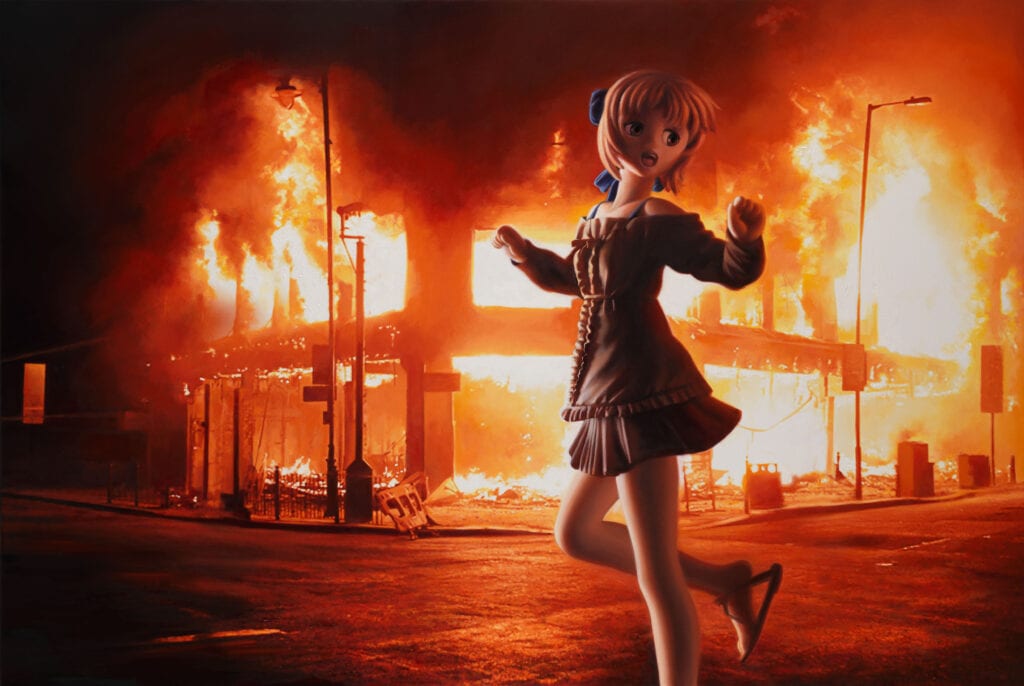
Occasionally, girls in military uniforms or with weapons in their hands appear in Helnwein’s works, sometimes with bandages or bloody wounds. These scenes are reminiscent of child soldiers or teenage spree killers in the USA. The artist thus thematizes the susceptibility of children to all kinds of manipulation and their ideological abuse. The comic characters in his pictures seem like perfidiously imagined “whisperers” and at the same time emphasize the lunacy of these delusions that have become images. Mickey Mouse, monstrous and with bared teeth, reveals a latent dark side and unmasks the evil that hides behind the otherwise friendly facade. The eerie yellow birdman with his long pointed beak approaching the crib is also from the nightmare.
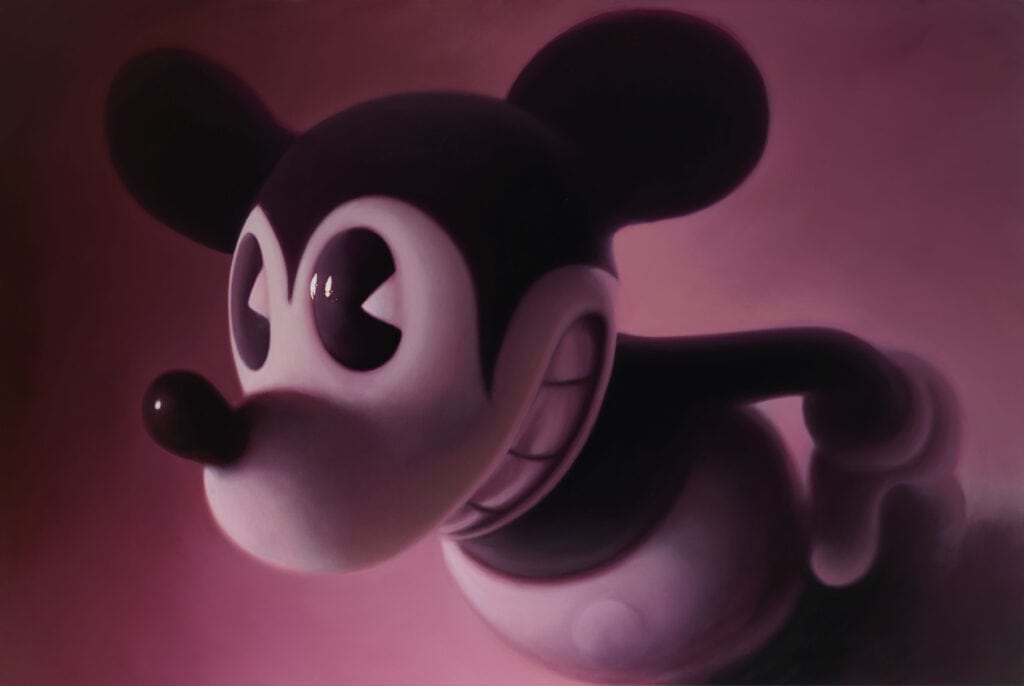
Helnwein ties in with the world of children’s lives, in which imagined things and fantasy have the same right to exist as real things: The monster under the bed becomes an actual danger, the teddy bear feels real emotions, and the closet door transforms into the entrance to a strange realm. But here in the painting, nothing springs from a child’s fertile imagination; on the contrary. Helnwein blurs the line between reality and nightmare to show: Monsters really do exist.
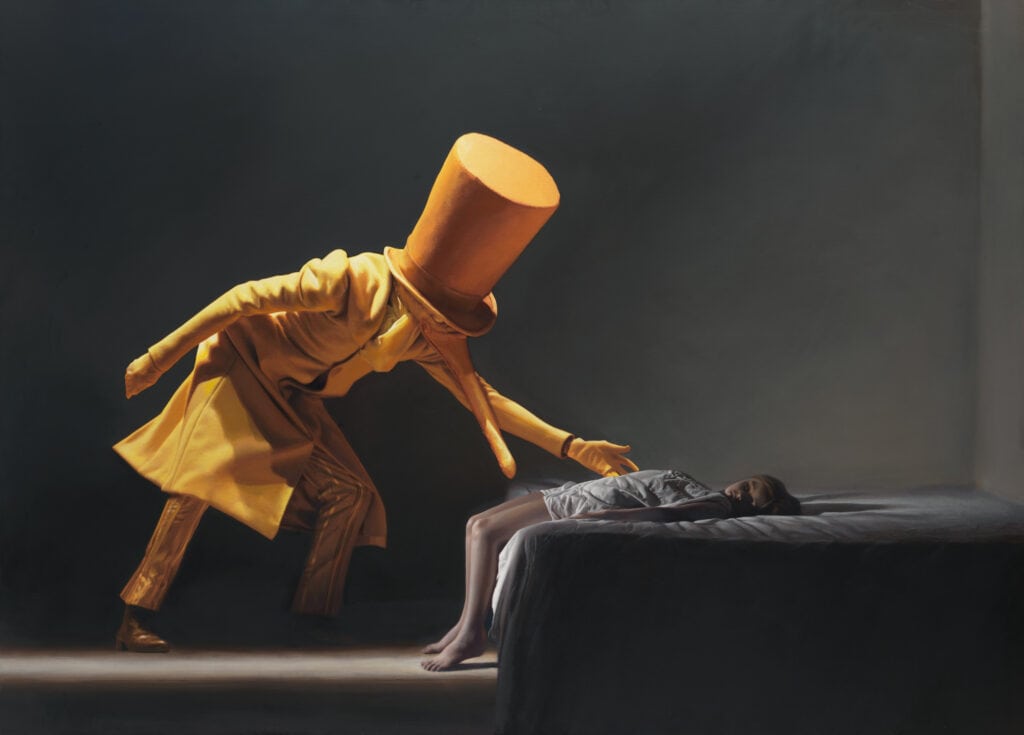
Helnwein has implemented his themes in a wide variety of techniques and media: from early watercolors and drawings to his actions and their photographic documentation to painting, stage sets for theater productions, and installations in public spaces. The art genres often merge into one another, or elements that were originally created in a different context find application in another place. The artist therefore sees himself primarily as a conceptual artist.
In the 1980s, at the time of his move to Germany, Helnwein realized that format mattered in art. In order to be noticed in competition with the flood of paintings, advertisements, posters, and billboards, his works had to become larger. This caesura in his oeuvre made his portraits of children monumental; occasionally they take up entire house facades. Helnwein thus gives the children an extraordinary presence that conveys the importance and urgency of his subjects. The figures, in their survival size and hyper-realistic mode of representation, in which the artist reproduces every detail with incredible accuracy, correspond to an exaggeration of reality that disturbs and simply overwhelms us.
Perhaps Helnwein’s work is impressive precisely because of this tension between realism and the rapture of the artistic object. The symbolic figures and motifs of violence play out in our minds, for we see a bloodied face, but not a bleeding and pain-distorted one.
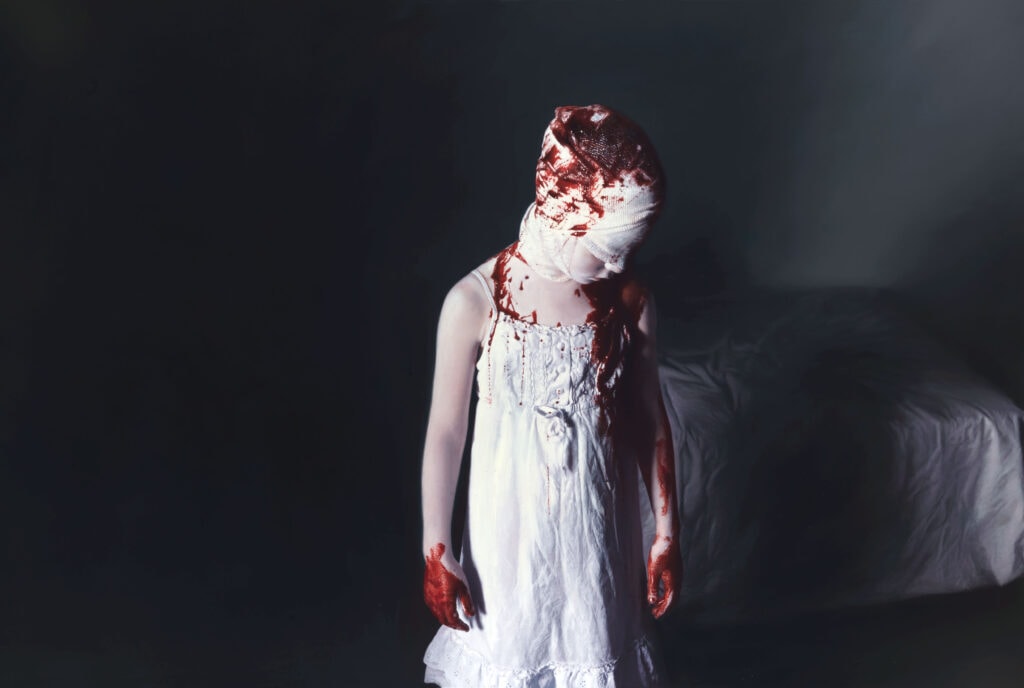
Exhibition dates
Duration October 25, 2023 – February 11, 2024
Exhibition venue Bastei / Gallery / ALBERTINA



